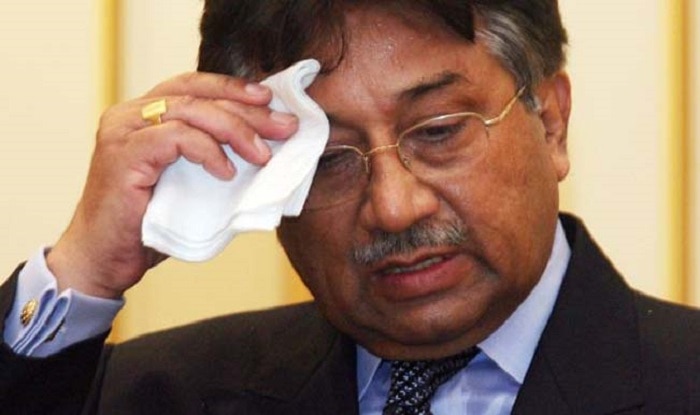
New Delhi: Former Pakistan president General Pervez Musharraf, who has been hospitalized In Dubai for the last three weeks due to a complication of his ailment, is going through a difficult stage where recovery is not possible and organs are malfunctioning, his family said on Friday. In a message posted on Musharraf’s Twitter handle, his family said that the former Pakistan President is dealing with Amyloidosis and urged people to pray for ease in 78-year-old retired Pakistani General’s daily living. “He is not on the ventilator. Has been hospitalized for the last 3 weeks due to a complication of his ailment (Amyloidosis). Going through a difficult stage where recovery is not possible and organs are malfunctioning. Pray for ease in his daily living,” the message read.Also Read – Pervez Musharraf’s Recovery Not Possible, Organs Malfunctioning: Family
The tweet comes after several media outlets ran stories declaring that the former political leader had died in Dubai on Friday. Pak news portal The Namal also reported that Musharraf had been put on a ventilator as his health had deteriorated. However, these reports were subsequently denied later. Musharraf has been living in Dubai for the last six years, where he has been getting treatment for amyloidosis. Also Read – Passengers Flying From Dubai To India May Have To Shell Out More Money
What is Amyloidosis?
Amyloidosis is the name for a group of rare, serious conditions caused by a build-up of an abnormal protein called amyloid in organs and tissues throughout the body. Amyloid is an abnormal protein that is produced in the bone marrow and can be deposited in any tissue or organ. The build-up of amyloid proteins (deposits) can make it difficult for the organs and tissues to work properly. Without treatment, this can lead to organ failure, according to National Health Service, UK. Also Read – Explained: Pakistan’s Nefarious Plan To Target Kashmiri Pandits Using Hybrid Terrorists, Pistols Instead of AK-47s
Symptoms of AL Amyloidosis
As per National Health Service, UK, the symptoms of AL amyloidosis depend on which tissues and organs are affected.
Kidney failure: Most people with AL amyloidosis have a build-up of amyloid proteins in their kidneys, and are at risk of kidney failure.
Symptoms of kidney failure include:
- swelling, often in the legs, caused by fluid retention (oedema)
- tiredness
- weakness
- loss of appetite
Heart failure: Deposits of amyloid in the heart can cause the muscles to become stiffer, making it more difficult to pump blood around the body. This may result in heart failure, which can cause:
- shortness of breath
- oedema
- an abnormal heartbeat (arrhythmia)
Other symptoms: Amyloid proteins can also build up in other areas, like the liver, spleen, nerves or digestive system. Symptoms can include:
- feeling lightheaded or fainting, particularly after standing or sitting up
- numbness or a tingling feeling in the hands and feet (peripheral neuropathy)
- nausea, diarrhoea or constipation
- numbness, tingling and pain in the wrist, hand and fingers (carpal tunnel syndrome)
- easy bruising
AL amyloidosis does not affect the brain, so it does not cause any problems with memory or thinking. In some cases, AL amyloidosis can be linked to a type of bone cancer called multiple myeloma.
Cause of AL Amyloidosis
Treating AL Amyloidosis
There is not currently a cure for amyloidosis. The amyloid deposits cannot be directly removed. But there are treatments to stop more of the abnormal proteins being produced and treat your symptoms. These treatments can give your body time to gradually clear the deposits before they build up again. This can help prevent organ damage.
As per NHS, in most cases, the treatment will involve having chemotherapy. Chemotherapy damages abnormal bone marrow cells and stops them producing the abnormal proteins that form amyloid deposits.
Steroids are usually given together with chemotherapy to boost the effect of the chemotherapy drugs. They may also lessen your chances of having a bad reaction to chemotherapy. Stem cell transplant is also used in some cases for treatment.
About Pervez Musharraf
Musharraf, who was born in New Delhi, took power in a coup in 1999. He served as president of Pakistan from 2001 to 2008. The former dictator had launched the Kargil operation without the civilian government’s approval. Aides of former prime minister Nawaz Sharif have said that Musharraf had also sought to derail talks with India through Kargil Operation.
After the Partition, Musharraf’s family settled in Karachi where he attended Saint Patrick’s School. He joined the Pakistan Military Academy at Kakul and graduated from the institution in 1964. He was subsequently commissioned in the Pakistan Army.
Stay connected with us on social media platform for instant update click here to join our Twitter, & Facebook
We are now on Telegram. Click here to join our channel (@TechiUpdate) and stay updated with the latest Technology headlines.
For all the latest For Top Stories News Click Here
